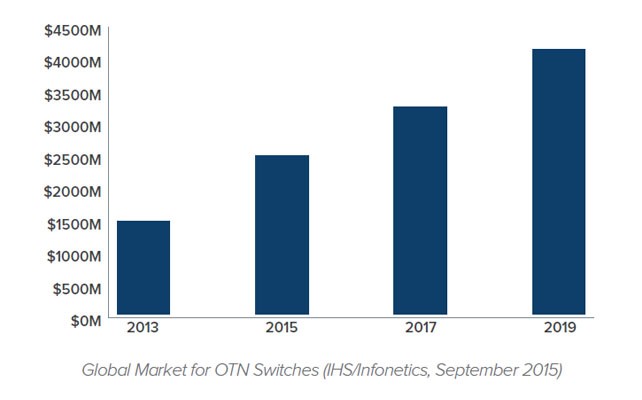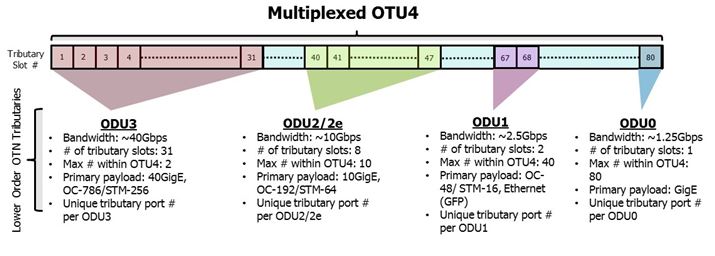Can Your Network Visibility Solution See Through the OTN Network?
Network operators are constantly being challenged to provide additional bandwidth to meet massive consumer traffic growth. Today’s long haul and metro networks are rapidly evolving to support data center expansion, public and private cloud adoption, preparation for broader introduction of 4K video and emerging virtual reality (VR) applications.
Operators are staying ahead of the bandwidth curve by deploying new core and metro packet optical transport network architectures combining DWDM, OTN and packet switching technologies. The Optical Transport Network (OTN), defined in ITU G.709 and commonly called “digital wrapper”, is a next-generation, industry-standard protocol providing an efficient and globally accepted way to multiplex services onto optical wavelengths for transport typically over DWDM networks. OTN technology allows network operators to converge networks through seamless transport of numerous types of legacy protocols including SONET/SDH, while also providing scalability and the flexibility required to support emerging protocols. Infonetics estimates annual spending on OTN deployments will triple from just 2013 to 2019.
The enhanced multiplexing capability of OTN allows different traffic types—including Ethernet, storage, digital video, as well as legacy SONET/SDH networks—to be carried over a single Optical Transport Unit (OTU) frame, typically either OTU2 at 10.7 Gb/s, OTU3 at 43 Gb/s, or OTU4 at 112 Gb/s. In addition to multiplexing services, OTN is adaptable to ever-changing customer requirements and provides more effective optical network management than legacy transport mechanisms.
OTN Monitoring Challenges
The rapid deployment of OTN transport gear has created challenges for those responsible for monitoring and intercepting network traffic. OTN’s multiplexing capabilities place a heavy burden on existing network visibility solutions; these solutions must be able to access OTN networks and extract traffic of interest so that existing high-cost Ethernet based analytic tools or probes can continue to be leveraged. For example, a 100G OTU4 signal can be comprised of many different tributaries including lower order OTN tributaries (ODU3/2/2e/1/0) ranging in bandwidth from 1.25Gbps up to 40Gbps as well as fully channelized SONET/SDH signals carried over the OTN tributaries.
Network monitoring equipment may be required to find analog voice traffic in a DS0 timeslot carried over a 10G OC-192/STM-64 signal embedded in an OTN ODU2 tributary multiplexed up into a 100G OTU4 transport signal on a DWDM network. This represents a high-level of traffic multiplexing that causes havoc on any existing network visibility system.
Network Visibility Solutions for OTN Networks
NetQuest and Gigamon have welcomed the challenge of accessing OTN networks and are working together to provide comprehensive network visibility solutions that simplify access to complex OTN networks. NetQuest’s Interceptor product line supports 10G, 40G and 100G OTN networks and can extract traffic of interest for output over standard 10G Ethernet interfaces. This provides easy network access to Gigamon’s award-winning GigaVUE Traffic Visibility Node for traffic aggregation, filtering, replication and other critical packet processing functions. Ultimately, NetQuest and Gigamon are delivering network visibility solutions that can go beyond traditional boundaries and access critical traffic carried over next-generation networks.
About NetQuest
NetQuest has established itself as a technology leader by delivering purpose-built monitoring solutions for directly accessing long haul and metro networks including OTN as well as DWDM and SONET/SDH networks. For more information regarding NetQuest’s network monitoring access product portfolio, visit us at www.netquestcorp.com.











